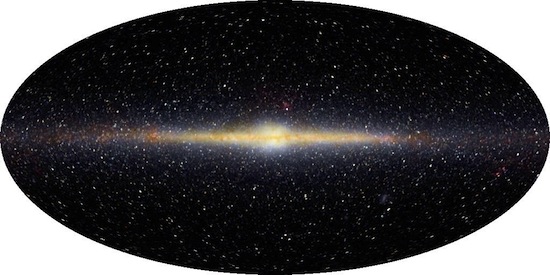
The Milky Way’s band is visible in the night sky, provided the sky is dark enough. Multiple Atacama Large Millimeter/submillimeter Arra (ALMA) antennas capture this image. (Photo by ESO/B. Tafreshi.
- Amazon Best Sellers Gaming Keyboards For 2021, 8 Amazon Best Selling Mechanical Keyboards
- Dark Souls Best Greatsword Pve, Your Rating Of Best Pve Weapons, Dark Souls Remastered Best Weapons
- Best Beaches In Costa Brava, Our Favorite Beaches On The Costa Brava
- Phantom Pain Best Buddy ? Spoilers Obviously Spoilers Obviously
- Kingdom Hearts Best Gummi Ship ? Best Possible Gummi Ship
The Milky Way Galaxy contains our solar system, which includes the Sun and all the planets orbiting it. In astronomy, a galaxy is defined as a massive cluster of stars, gas, and dust held together by gravitational forces. They can be found in a wide range of sizes and forms. In terms of galaxy types, the Milky Way is a large barred spiral. Our Milky Way Galaxy contains every star we can see in the sky at night. The name “Milky Way” refers to the way our galaxy looks in the sky when it’s really dark out.
Bạn đang xem: Which Of The Following Best Describes The Milky Way Galaxy, Chap 1 Flashcards

The Milky Way galaxy can be seen as a flat disk in an image of the entire sky. (Source: NASA/DIRBE/The COBE Project/E. L. Wright/UCLA)
Xem thêm : The 30 Best Dubstep Remix Of Popular Songs Ever, The 30 Best Dubstep Songs Ever
Look here:Ten Most Beautiful Pieces of Classical Chinese Music?
Mapping ionized hydrogen clouds and young, bright stars in the Milky Way’s disk also provides astronomers with important information. These clouds, known as HII regions, are made up of free protons and electrons and are ionized by young, hot stars. Both of these are crucial indicators of spiral arms in other galaxies we observe, and their mapping in the Milky Way can provide insight into the galaxy’s true structure. Because of how bright they are, we can see them through the disk of our galaxy, with the exception of the galactic center.
Whether the Milky Way has two or four spiral arms is a matter of some debate. Recent research indicates that it has four arms, as depicted in the image below by the artist.

Because we are confined to the Milky Way, we must rely on indicators of spiral arms such as young, massive stars and ionized clouds. This artist’s conception of the Milky Way’s spiral structure is grounded in observations of the observed distances between young, hot stars (shown in red) and ionized clouds of hydrogen gas (shown in blue). Image by Robert Hurt, the Spitzer Science Center, and Robert Benjamin (Credit: Urquhart JS, et al.)
Xem thêm : What Is The Best Pokeball To Catch Rayquaza In Pokemon Go: Best Throws
Check this out:Playbooks for Madden NFL 16 (Offensive) – Best of Madden
Numerous other characteristics of the Milky Way provide further evidence for its spiral structure. The Milky Way’s dust content and the dominant colors of the light we see are consistent with those of other typical spiral galaxies, according to astronomical measurements. Even though we can’t go outside and see the Milky Way in its entirety, we can still get a sense of it from all of these factors taken together.
Other galaxies number in the billions throughout the cosmos. Only three galaxies beyond our own Milky Way can be seen with the naked eye, and they all look like fuzzy patches in the sky. Without a telescope, the Large and Small Magellanic Clouds are the closest galaxies to our own. From the southern hemisphere, you can see these satellite galaxies of the Milky Way. They’re so far away from us that even light travel takes about 160 years. If you live in the northern hemisphere and have good vision and a very dark sky, you may be able to make out the Andromeda Galaxy, a larger galaxy. In other words, it takes light 2.5 million years to reach us from one of our “nearby” galaxies, but it is getting closer and closer, and scientists predict that in about 4 billion years it will collide with the Milky Way. The other galaxies are even more distant and require the use of telescopes to observe them.

The Andromeda Galaxy is the closest major neighbor galaxy to our own. (Hat tip to Bill Schoening and Vanessa Harvey from the REU program at NOAO and the AURA and the National Science Foundation.)
Nguồn: https://directmarketingcenter.net
Danh mục: Best









